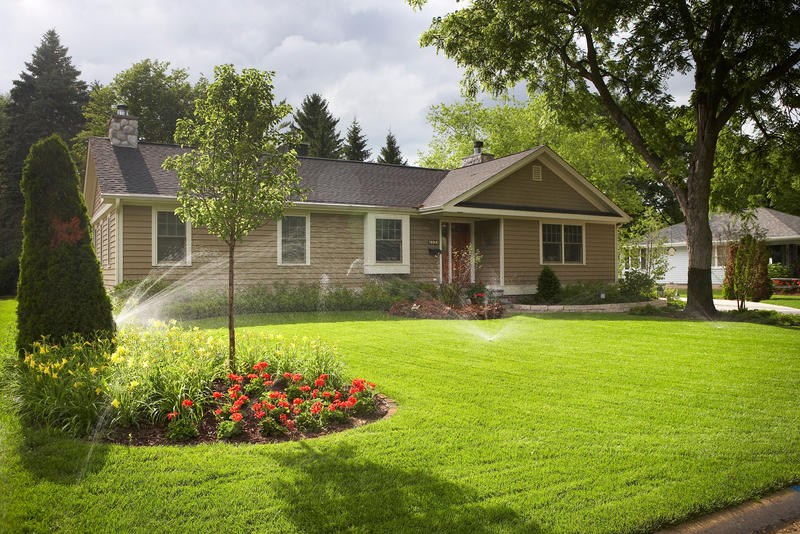
FAQs about Pop-up Sprinkler and Garden Irrigation
10 Powerful Reasons to Use Pop-Up Sprinklers for Efficient Garden Irrigation
SEO Title: 10 Powerful Reasons to Use Pop-Up Sprinklers for Efficient Garden Irrigation
Meta Description: Discover how pop-up sprinklers can revolutionize your garden irrigation system—saving water, time, and energy while promoting healthier plant growth.
Understanding Pop-Up Sprinklers and Garden Irrigation Systems
When it comes to keeping your garden lush and healthy, an efficient garden irrigation system is key. Among the many options available, pop-up sprinklers have gained massive popularity for their convenience and efficiency. These systems automatically rise when in use and retract when not, maintaining your lawn’s aesthetic appeal while ensuring consistent watering.
What Is a Pop-Up Sprinkler?
A pop-up sprinkler is a type of irrigation head designed to stay hidden underground until activated by water pressure. When the system turns on, the nozzle “pops up,” spraying water over a designated area. Once finished, it retracts neatly, preventing tripping hazards and protecting the sprinkler from damage caused by lawn equipment.
Pop-up sprinklers are typically made from durable plastic and come in various heights, nozzle types, and spray patterns to suit different garden layouts. The result? A reliable watering solution that’s both discreet and efficient.
How Garden Irrigation Works
Garden irrigation systems distribute water evenly across your lawn or garden beds through interconnected pipes and sprinkler heads. These systems can be manual or automatic, with advanced setups using smart timers and weather sensors. The goal is to mimic natural rainfall, ensuring that plants receive the right amount of moisture without waste.
From small home gardens to expansive landscapes, pop-up sprinkler systems adapt easily to different layouts—making them an excellent choice for both beginners and experienced gardeners.
Key Benefits of Pop-Up Sprinklers in Modern Gardening
Installing pop-up sprinklers offers a variety of benefits beyond simple watering. They’re designed for efficiency, convenience, and long-term savings.
Water Conservation and Efficiency
Water is one of our most precious resources, and pop-up sprinklers help conserve it. Equipped with adjustable nozzles and efficient spray patterns, they minimize overspray and runoff. Many modern models even feature pressure-regulated heads to reduce waste and improve distribution.
Uniform Water Distribution
A healthy lawn depends on even watering. Pop-up sprinklers ensure uniform coverage, eliminating dry patches and overwatered spots. This consistent watering encourages strong root growth, leading to greener, more resilient plants.
Automated Scheduling and Control
Pairing your system with an irrigation controller allows for full automation. Set it once, and your garden will receive the perfect amount of water—no manual intervention needed. Some advanced systems can even pause watering during rain, thanks to smart weather sensors.
Types of Pop-Up Sprinklers and Their Applications
Pop-up sprinklers come in various types, each suited for different applications and garden sizes.
Rotary Sprinklers
These sprinklers rotate streams of water in a circular motion, making them ideal for large lawns and open spaces. They offer excellent coverage and use less water compared to traditional fixed-spray heads.
Fixed Spray Sprinklers
Designed for smaller lawns or flower beds, fixed spray sprinklers provide a steady, fan-shaped spray pattern. They’re perfect for areas that require targeted watering.
Bubblers and Drip Irrigation Integration
For gardens with diverse plants, combining pop-up sprinklers with drip irrigation or bubblers ensures precise watering for each section. This hybrid approach maximizes water use efficiency and plant health.
How to Install a Pop-Up Sprinkler System in Your Garden
Setting up your own sprinkler system may seem daunting, but with proper planning, it’s quite manageable.
Planning and Layout Design
Start by sketching a layout of your garden, marking areas that need watering. Choose appropriate sprinkler heads based on size and plant type. Remember to plan zones to control watering separately for lawns, shrubs, and flowerbeds.
Installation and Testing
Dig trenches for the piping, connect the system to a water source, and install the sprinkler heads. After setup, test the system for leaks and adjust spray patterns to ensure optimal coverage.
Troubleshooting Common Issues
Occasionally, you might face clogged nozzles or uneven water flow. Regularly check for blockages, clean the filters, and replace damaged heads to keep your system performing efficiently.
(The article continues with Smart Irrigation Technology, Maintenance Tips, Environmental Impact, FAQs, and Conclusion...)
Smart Irrigation Technology and Pop-Up Sprinklers
The future of gardening lies in smart irrigation—a system that combines automation, precision, and environmental awareness. Pop-up sprinklers have evolved to integrate seamlessly with cutting-edge technology, allowing homeowners to manage their garden irrigation systems with unprecedented ease.
Smart Controllers and Wi-Fi Timers
Modern pop-up sprinkler systems can now be paired with Wi-Fi-enabled controllers, which let you operate your irrigation system directly from your smartphone. You can adjust schedules, pause watering, or activate specific zones remotely. These controllers often connect to home assistants like Google Home or Alexa, providing voice-activated control.
Beyond convenience, they help you conserve water by analyzing past usage patterns and recommending optimized schedules. This makes them an excellent long-term investment for eco-conscious gardeners.
Weather-Based Adjustments
Smart systems utilize real-time weather data from local stations or built-in sensors. If rain is forecasted, the system automatically reduces or cancels watering cycles, ensuring not a single drop goes to waste. On hotter days, it compensates by slightly increasing watering frequency—helping plants thrive under fluctuating weather conditions.
By merging technology and sustainability, pop-up sprinklers have transformed from simple irrigation tools into smart ecosystem managers that nurture your garden while conserving natural resources.
Maintenance Tips for Long-Lasting Pop-Up Sprinklers
A well-maintained pop-up sprinkler system can last for many years. Regular care ensures consistent performance and prevents costly repairs.
-
Check for Clogs and Leaks: Periodically inspect each sprinkler head. Dirt and debris can block nozzles, affecting spray patterns.
-
Flush the System: Once or twice a year, flush out the system to remove sediment buildup in pipes.
-
Adjust Sprinkler Heads: Ensure each head is level with the ground to prevent uneven watering or damage from lawn mowers.
-
Winterize the System: In cold climates, drain water from the lines before winter to prevent freezing and cracking.
-
Inspect Valves and Timers: Confirm that automatic timers and valves function properly to maintain accurate watering cycles.
With these simple steps, your garden irrigation system will perform efficiently year-round.
Cost Analysis: Are Pop-Up Sprinklers Worth It?
While installing a pop-up sprinkler system may require an upfront investment, the long-term benefits far outweigh the initial costs.
| Expense Category | Average Cost (USD) | Details |
|---|---|---|
| Equipment (sprinklers, pipes, valves) | $250 – $500 | Depends on garden size |
| Installation (DIY or professional) | $300 – $800 | Professional installation adds convenience |
| Smart Controller | $100 – $250 | Optional but highly efficient |
| Annual Maintenance | $50 – $100 | Includes cleaning and repairs |
Return on Investment (ROI):
You’ll notice savings on your water bill within months. Automated watering ensures no overuse, which can reduce water consumption by up to 30–50% annually. Over time, the system pays for itself while keeping your lawn green and vibrant.
Environmental Impact of Efficient Garden Irrigation
Eco-friendly gardening is no longer a trend—it’s a necessity. By using pop-up sprinklers, you actively contribute to water conservation and sustainable landscaping practices.
-
Reduced Water Waste: Pop-up sprinklers deliver water directly to the root zone with precision.
-
Minimal Evaporation: Since they operate at ground level, less water evaporates compared to traditional sprinklers.
-
Healthier Ecosystems: Proper irrigation prevents soil erosion and nutrient leaching, supporting biodiversity.
Efficient irrigation isn’t just about maintaining a beautiful lawn—it’s about protecting the planet’s most valuable resource: water.
Common Mistakes to Avoid with Pop-Up Sprinklers
Even the most advanced systems can underperform if not used correctly. Avoid these common errors:
-
Overwatering: Too much water can drown roots and encourage fungus growth.
-
Incorrect Head Placement: Poor spacing can cause uneven watering or dry spots.
-
Neglecting Maintenance: Ignoring clogs and leaks leads to inefficiency.
-
Skipping Seasonal Adjustments: Adjust schedules for temperature and rainfall changes.
-
Using Wrong Nozzles: Mismatched nozzles can waste water and reduce performance.
Avoiding these pitfalls ensures your irrigation system remains effective and eco-friendly.
FAQs About Pop-Up Sprinklers and Garden Irrigation
1. How deep should I bury pop-up sprinkler heads?
Typically, pop-up sprinklers should be buried 2 to 4 inches below ground level, allowing them to retract properly and stay protected.
2. Can I install pop-up sprinklers myself?
Yes! With basic tools and a detailed plan, most homeowners can complete a DIY installation. However, for larger systems, hiring a professional ensures optimal design and water pressure management.
3. How often should I water my garden using sprinklers?
It depends on your climate and soil type. Generally, 2–3 watering sessions per week are enough, providing deep moisture to plant roots.
4. What’s the lifespan of a pop-up sprinkler system?
A well-maintained system can last 10–15 years, though individual parts like nozzles and valves may need replacement every few years.
5. Are pop-up sprinklers suitable for vegetable gardens?
Yes. By adjusting spray patterns and using fine mist nozzles, they can efficiently water vegetable gardens without damaging delicate plants.
6. Can I combine pop-up sprinklers with drip irrigation?
Absolutely. Many gardeners mix both systems to target specific plants and maximize water efficiency—a perfect solution for diverse garden types.
Conclusion: Transform Your Garden with Smart Pop-Up Sprinkler Systems
A well-planned pop-up sprinkler garden irrigation system is more than a convenience—it’s an investment in your garden’s health, your wallet, and the environment. By embracing smart technology and sustainable practices, you can enjoy a lush, thriving lawn with minimal effort and waste.
So whether you’re upgrading an old system or starting from scratch, now is the perfect time to harness the benefits of efficient, eco-friendly irrigation. Your plants—and the planet—will thank you. 🌿
External Resource:
For more detailed irrigation planning and eco-friendly garden design, visit the U.S. Environmental Protection Agency’s WaterSense Program.
หากสนใจสินค้าสามารถสั่งซื้อได้ที่เรา K.J. Sprinkler / มีสินค้าพร้อมส่ง / มีใบกำกับภาษี
- ซื้อผ่านระบบตะกร้าช็อปปิ้ง www.kjsprinkler.com หรือ
- โทร. 0895109333
- หรือสั่งซื้อผ่าน Line ID: @kjs1

Add Officcial Line ผ่าน QR Code
Search
Categories
CONTACT US

Member
- ระดับ{{userdata.dropship_level_name}}
- ไปหน้าหลักตัวแทน
- ทั้งหมด {{(order_nums && order_nums.all)?'('+order_nums.all+')':''}}
- รอการชำระเงิน {{(order_nums && order_nums.wait_payment)?'('+order_nums.wait_payment+')':''}}
- รอตรวจสอบยอดเงิน {{(order_nums && order_nums.wait_payment_verify)?'('+order_nums.wait_payment_verify+')':''}}
- รอจัดส่งสินค้า {{(order_nums && order_nums.wait_send)?'('+order_nums.wait_send+')':''}}
- รอยืนยันได้รับสินค้า {{(order_nums && (order_nums.wait_receive || order_nums.wait_confirm))?'('+(order_nums.wait_receive+order_nums.wait_confirm)+')':''}}
- รอตรวจสอบข้อร้องเรียน {{(order_nums && order_nums.dispute)?'('+order_nums.dispute+')':''}}
- เรียบร้อยแล้ว {{(order_nums && order_nums.completed)?'('+order_nums.completed+')':''}}
- ทั้งหมด {{(order_nums && order_nums.all)?'('+order_nums.all+')':''}}
- รอการชำระเงิน {{(order_nums && order_nums.wait_payment)?'('+order_nums.wait_payment+')':''}}
- รอตรวจสอบยอดเงิน{{(order_nums && order_nums.wait_payment_verify)?'('+order_nums.wait_payment_verify+')':''}}
- รอจัดส่งสินค้า {{(order_nums && order_nums.wait_send)?'('+order_nums.wait_send+')':''}}
- ส่งสินค้าเรียบร้อยแล้ว {{(order_nums && order_nums.sent)?'('+order_nums.sent+')':''}}
Track & Trace
Links





